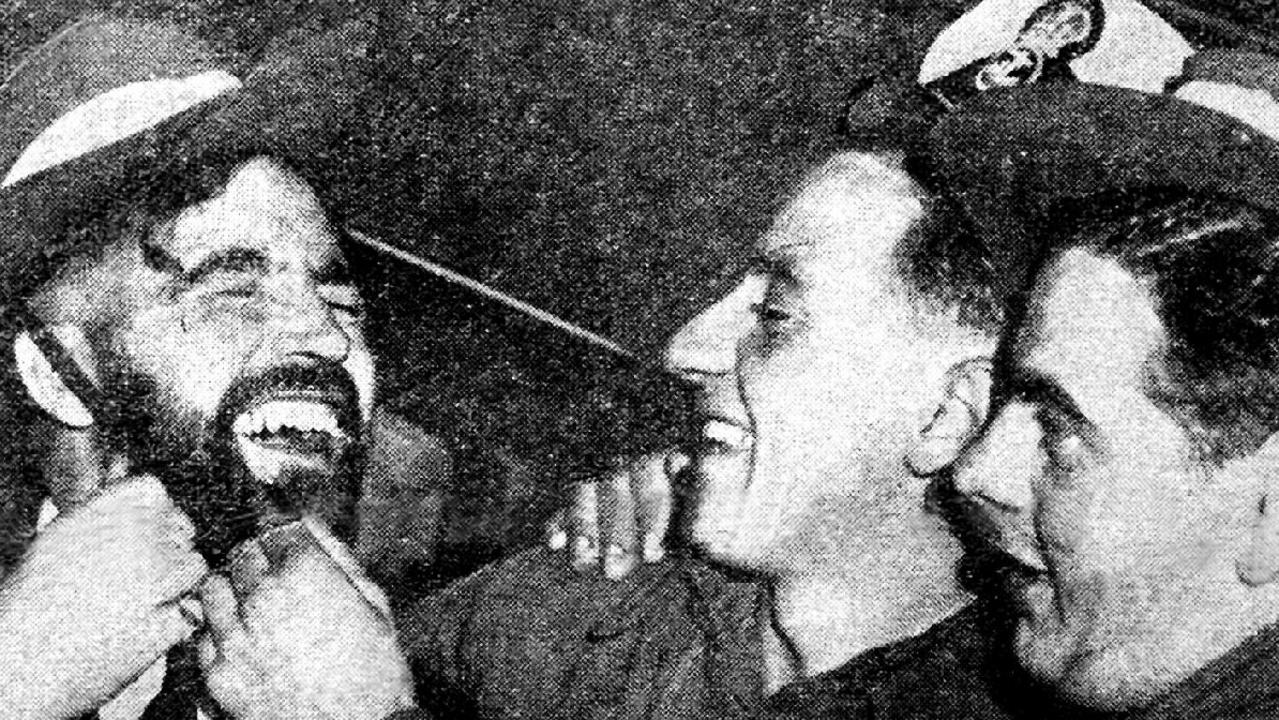South Australian electoral boundaries redraw: The reaction
WILL the proposed new electoral boundaries give Labor a boost, or could they help the Liberals? Our team of political commentators analyse SA’s new political reality.

- Electoral boundaries redraw has SA Libs on the warpath
- Nuclear Dossier: Learn more about the biggest decision facing SA
WILL the proposed new electoral boundaries give Labor a boost, or could they help the Liberals? Our team of political commentators have their say.
Advertiser Political Reporter Sheradyn Holderhead
THOSE within political circles were expecting the draft boundaries redraw to deliver radical changes. And it did, but not in the way most expected.
The State Liberals, who have long argued it was unfair they lost the last election after winning 53 per cent of the vote, had been dreaming they would be handed victory without lifting a campaign finger.
But instead it dramatically shoved around hundreds of thousands of voters into different seats but did little to the headline figures, moving only one extra seat to the Liberals.
While the result wasn’t ideal for Labor, it wasn’t the bloodbath some expected.
The sophomore swing the newbie candidates hope for their second time on the campaign trail will likely be lost as seats like the new Hurtle Vale, King, Gibson and Black and redrawn Torrens are filled with thousands of new voters
Some Liberal MPs will also need to consider if fighting to keep certain communities within their electorate was for the greater good as the redraw failed to unlock the safe Liberal votes in country areas.
The mooted move to take Port Pirie out of independent MP Geoff Brock’s Frome and put it in Stuart, reducing the margin there, will be one for thought.
------
Former State Labor Treasurer Kevin Foley
THERE would have been many state MPs sleeping restlessly on Sunday night as they anxiously awaited yesterday’s release of the 2016 Electoral Boundaries Redistribution Report.
This is a stressful time for many MPs, as a simple stroke of a pen can end a career or plunge them into a fight for their political lives, as the state’s 47 House of Assembly electorate boundaries are redrawn as required by law after every state election.
The very real prospect of having your career cut short, regardless of your personal efforts and popularity, is a huge disincentive for someone attempting to make a significant contribution to public policy in this state.
The Boundaries Commission has really taken a meat cleaver to existing boundaries in this draft report. There are very few seats that have not been affected in some form. As always, they chuck in further confusion by renaming a number of seats and, as is their wont, come up with some weird electoral names.
The bottom line is that neither major party will be happy with the changes. This probably means they have come up with as good a redistribution as the law allows.
The law requires that as best as can be forecast, a party winning 50 per cent of a state vote should be able to form government. The Liberals complain that with nearly 53 per cent of the vote at the last state election, they were unfairly denied government.
No system can be perfect and absolute, and the weakness in the Liberal argument is that they continually campaign hard in safe Liberal seats, of which they will have 18 now to Labor’s 13, and fail to concentrate on the marginal urban seats needed to form government.
Certainly since 1989, Labor has perfected the political art of sandbagging those vulnerable seats needed to either hold on to government or win.
The games is about who wins the most seats, not the most votes. Most of the senior Liberals I talk to agree with this interpretation. Trust me, they are just as pragmatic and ruthless as Labor. Sorry if this insight into party political motivations repulses you. But as I said earlier, it is what it is.
Based on this report, if the Liberals receive 53 per cent of the vote at the next state election they will win 25 seats to Labor’s 22. This is also assuming two independent seats return to the Liberal fold.
However, if the vote is 50/50, uniform across the state, then it is likely that Labor will win with 24 to 23 seats. On paper I would say this report slightly favours the Liberals, but in reality nothing in politics is what it seems.
The same political dynamic will be in play when it comes to winning enough seats to form the next government. The Liberal seats of Adelaide and Elder are now clearly in Labor’s sights and winnable with margins at 0.6 per cent and 1.1 per cent.
For the Libs, they have from 4 to 6 really marginal Labor seats under 2.2 per cent that they will believe are winnable and have been notionally gifted. Mawson, held by Leon Bignell, I would not be prepared to concede as Bignell is one of the best retail politicians in the business.
Ultimately, the election is there for both parties to win. If the Liberal vote drops a few per cent from its high at the last election then Labor could win a further 5 seats. If the Liberal hold on to their vote and make it count in the marginals, then they will win a decent majority.
This will be an exciting election and the Liberals can’t complain anymore — they have been given largely what they asked for.
-------
Sascha Meldrum, state director of the SA Liberal Party
THE current Boundaries Commission should be commended for the way it has approached the difficult boundary redistribution task in such a thorough and transparent way, including community consultation.
The Liberal Party lodged a submission calling for fairness. It is only fair that the people of South Australia are governed by the party which attracts more than 50 per cent of the majority vote.
The Commission’s Report shows that it has taken notice and acted on the strong legal position put forward by the Liberal Party, and others, calling for substantial change.
The Commission’s written report acknowledges that “having regard to the election results over the last 40 years there is an innate imbalance, against the Liberal Party, caused by voting patterns in South Australia superimposed upon successive redistribution”.
Our legal case called on the Commission to fix this imbalance and uphold its Constitutional obligations so that a party that attracts more than 50 per cent of two-party preferred vote be enabled to form government with at least 24 seats.
However, despite the acknowledgment of the need to fix the imbalance, the swing-to-lose pendulum released yesterday shows that we could again find ourselves in the position of a party that could have more than 50 per cent of the two-party preferred vote but still not being able to form government.
This is not acceptable for voters in South Australia.
The pendulum shows that Labor could in fact form Government in 2018 with less than 50 per cent of the two-party preferred vote and as many as 28 seats.
This would give Labor a five-seat majority in the Parliament while still having less than 50 per cent of the two-party preferred vote.
We will now analyse the proposed boundaries in greater detail and prepare a written response to the Commission.
The Liberal Party will continue to call for fairness and a just outcome for all South Australians.
------
Dean Jaensch, Emeritus Professor at Flinders University
THE Electoral Districts Boundaries Commission has made a valiant effort to produce an electoral map which will satisfy the demand of the Constitution that any party which wins a majority of the votes will win a majority of seats, and form a government.
If it does succeed it will be the first time since the so-called “fairness clause” was applied.
The redistribution process has changed two Labor seats on the basis of the 2014 result to the Liberal Party, which would result in Liberal 25 seats to Labor 22.
Labor Minister Leon Bignell and newly elected Labor member Annabel Digance now occupy notionally Liberal seats.
There are a number of other seats which have been modified, and there will be more marginal seats in 2018 than there were in 2014.
The overarching problem in interpreting the likely impact of the changes is that the new boundaries are based on calculations from the 2014 election.
The Commission’s hope that its changes will actually work this time depend on the patterns of party support remaining unchanged.
In fact, there is never a uniform swing, and voters have an annoying habit (in terms of the Commission) of changing their votes from one election to the next.
Further, the increasing tendency of voters to elect independents complicates matters even more. The election contests are no longer just Labor versus Liberal. And when elected members change party allegiances after the election, there are further questions raised.
Both major parties will be far from satisfied with the new map.
The Liberal Party will complain that the boundaries are still not “fair”, and Labor will not happily accept the potential loss of two of its members.
The Constitution demands a “fair” result, with a qualification “as near as practicable”.
This latest redistribution seems to have achieved that. Whether it actually produces a fair result will have to wait until 2018.
------
Haydon Manning, Associate Professor in the Department of Politics and Public Policy at Flinders University
THE Boundaries Commissioners literally deal with a witches brew because a core assumption they are forced to work with has become so flawed.
But Commission has followed the law and produced a set of boundaries which, if (and it is a big if) the same voting pattern as in March 2014 occurs in March 2018, we should see the Liberals win enough seats to form government in South Australia
Bedevilling the Commissioners’ deliberations in my view is the issue of how relevant the notion of a two-party preferred statewide vote is today.
This demands boiling the vote down to the classic Liberal vs. Labor contest and frankly this is simply no longer so relevant.
Sure enough, 25 years ago when the election ‘‘fairness clause’’ was introduced, the major party contest looked set in stone.
But it’s a fair bet the next election will see the Xenophon Team make a mockery of that comfortable assumption.
The point is, it was always a fallacy to look back at the most recent election and say, “Well on balance we don’t see much change in the party contest so all that is required is some tweaking of the boundaries’’ so as to produce a ‘‘fair outcome’’.
However, we’ve constantly seen independents bob up, and now the Xenophon Team looms large.
In a nutshell, this simply makes a mockery of the reliability of the notional ‘’statewide’’ two-party contest as a measure for determining electoral ‘‘fairness’’.
This radical boundaries redraw is unfortunate, but sadly a necessary outcome given the way the law must unfold in practice.
Why so ‘‘sad’’? In my view the heart of state level politics is about your local MP getting to know you, the voter. That takes the hard slogging effort of attending endless community events, constantly door knocking and diligently following up on all constituent inquiries.
The best MPs do that well and are rewarded with a “personal vote’’ that, more often than not, will see them through a tough election.
What the radical redraw does it cut the ground from under those hardworking MPs who have built up that connection with their constituents.
No doubt post the next election many voters will be disappointed when the MP they knew, and even liked and trusted, is now representing the neighbouring electorate.


